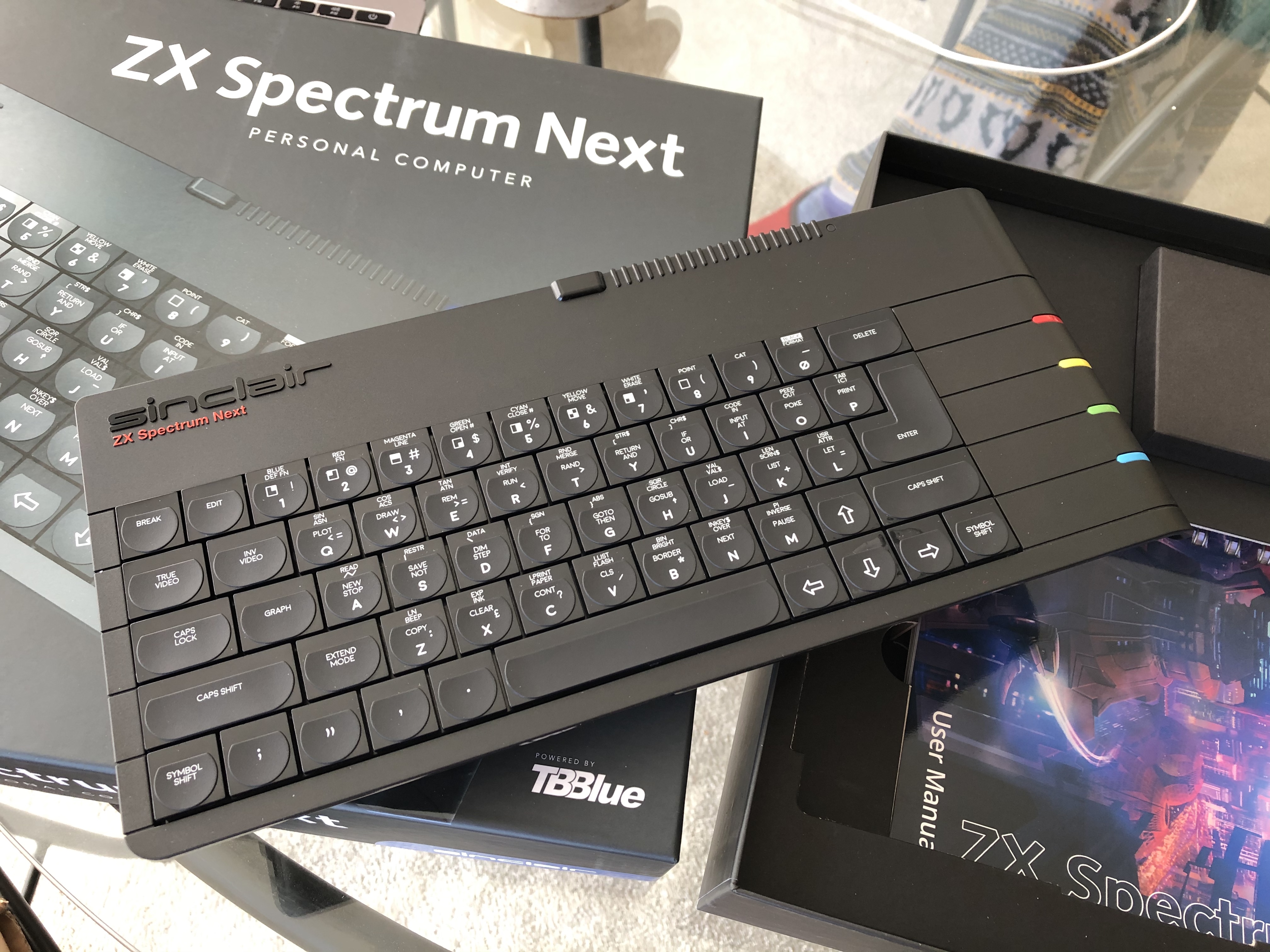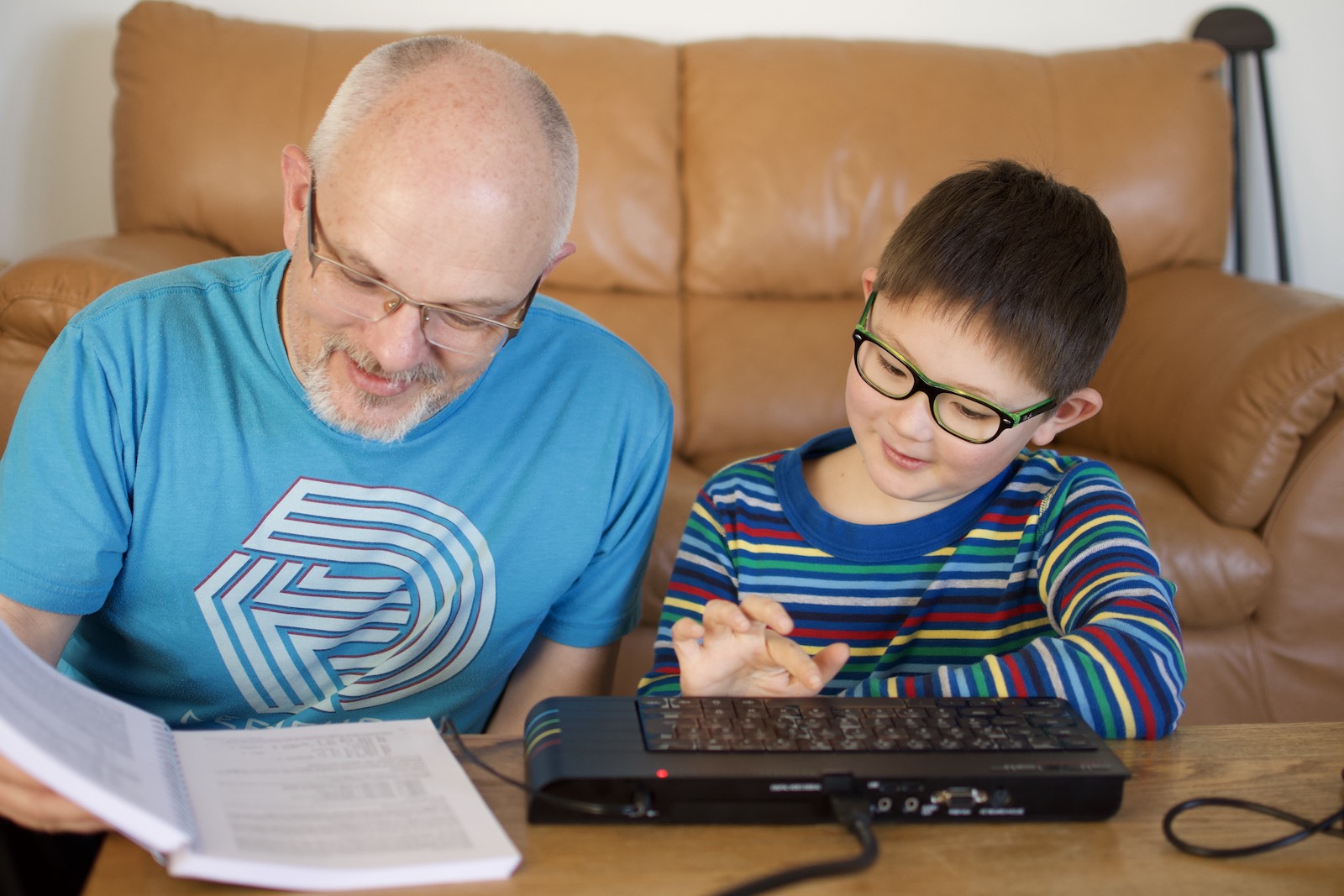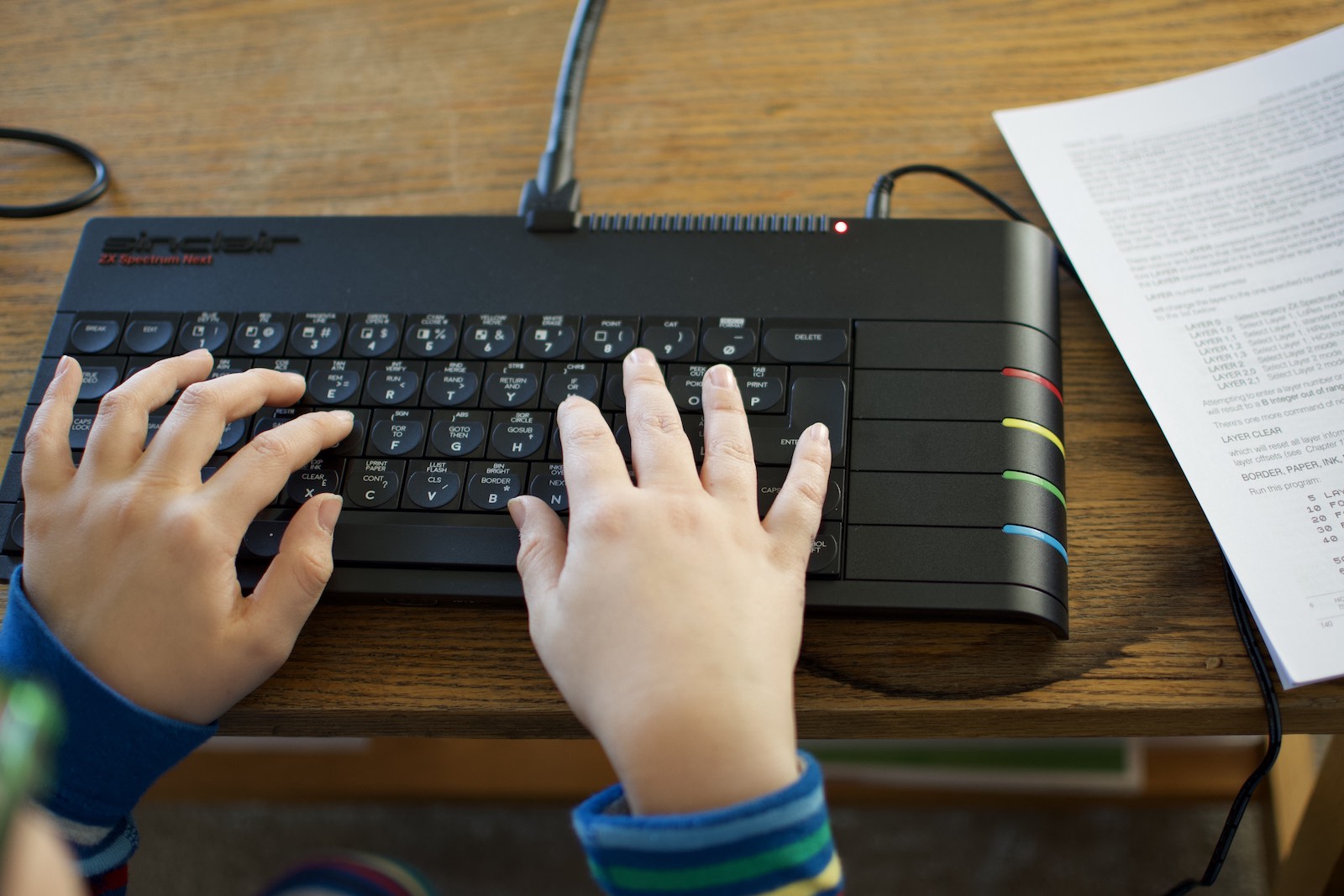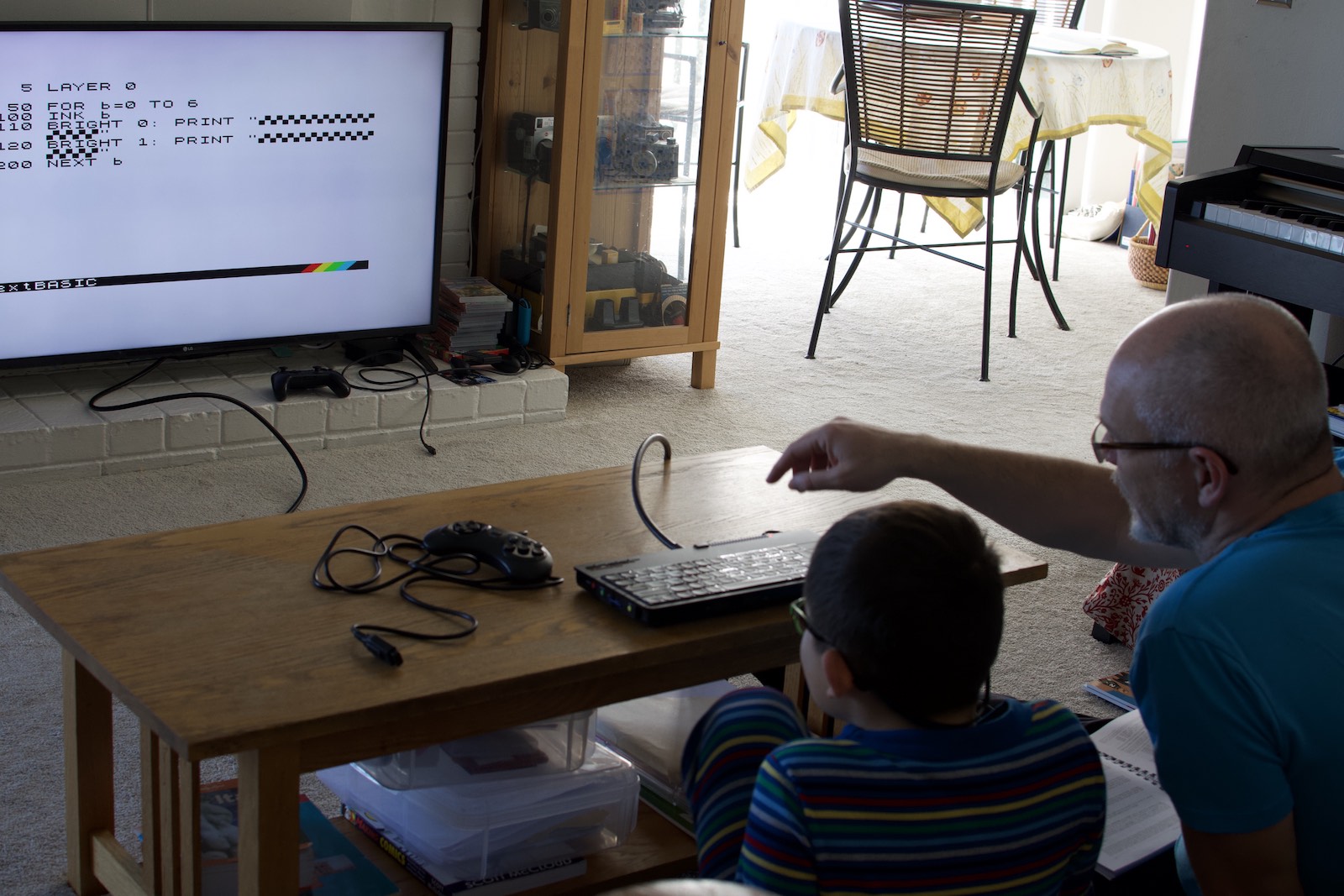Now go outside and look at the sky.
Pair Programming
A week ago I received a long expected box from Great Britain - the Spectrum Next had finally shipped and mine was in the first batch to be sent out. Right now over 3000 Kickstarter backers are unboxing their brand new Spectrums and I'm confident to say that we are all shocked... shocked! at the amazing quality of this computer.
It is a beautiful machine.

This picture - yes, of course I took an unboxing photo - gives you a hint of how well this project came out. But not just does the Next look great and not just is the manual much bigger and full-featured than expected, the computer works well and it fulfills a wish of mine that might not have been on the radar screen of the Next team:
It is a great learning computer.
As a software developer that has been living and breathing code for almost 40 years - since the original Sinclair computers - I have been struggling with how I would introduce programming to my kid.
He is now nine years old and of course has been exposed to a variety of computers and even already had a programming course utilizing Scratch, but Scratch as well as HTML or JavaScript are on a fairly high level, far removed from the actual inner workings of a computer.
In addition, the programming environment with a mouse and a windowing system is actually adding to the work of the teachers. I had been helping in our local school during a one-day HTML coding camp for 5th-graders and it was surprising how much time we spent on things like cut & paste and on recovering from erroneously closed windows.
What I feel is missing from all of these courses is a basic understanding of how a computer operates and a system so dirt simple that there is no way to actually get anything wrong.
So when the Spectrum Next Kickstarter launched, I realized that I might get my Next just around the time when programming with my kid would become a reasonable activity... and I remembered how easy it was to learn programming on an 8-bit home computer in the 80s: No distracting Internet. No windows. No mouse. No way to "break" anything. Worst case, if you manage to crash the machine, you literally pull the plug and start again.

So here we are - as the tradition requires, in our pajamas on a Sunday morning - typing in BASIC listings from the Spectrum manual.
Setup is as easy as can be: Plug in an HDMI cable to the TV and the power cable. The Spectrum starts up in seconds and there is a cursor. Ready to program!
The manual does a great job of mirroring the original manual from 1982 - it is a BASIC programming course that takes you with a gradually increasing complexity through simple loops and text output, on to graphics and sound and even ends with a very short introduction to machine language several hundred pages later.

The computer is easy to use, and there are no traps that would take you out of the task at hand. No way to mistakenly close a window or delete a file. Several times when we ended up at a point where we were done with an example, we just hit the reset button, rebooted the machine to a clean state in seconds, and started the next example.
Having only a limited 8-bit machine has some advantages while learning to program. The screen has 256x192 pixels and the graphic functions are very limited, which means there is no pressure to immediately produce Hollywood-level graphics. It allows the learning programmer to feel the achievement of a simple line drawing that teaches much more about the basics of computing than a cut & paste job with random photos in an advanced environment.
The fact that there is absolutely no way to break anything is incredibly freeing. It immediately felt the way programming felt back when I was a kid with the original Spectrum and I noticed that our son was really engaged with the code and figured things out by himself.

We'll probably spend many more Sundays in front of the TV with the Spectrum at hand.
Should you decide that you missed out on an amazing opportunity, the team behind the Spectrum Next will most likely conduct a follow-up Kickstarter for a second round of manufacturing. You can check https://www.specnext.com for Spectrum Next news.